MCT Sequential One – Review of one of the most impressive timepieces in the market
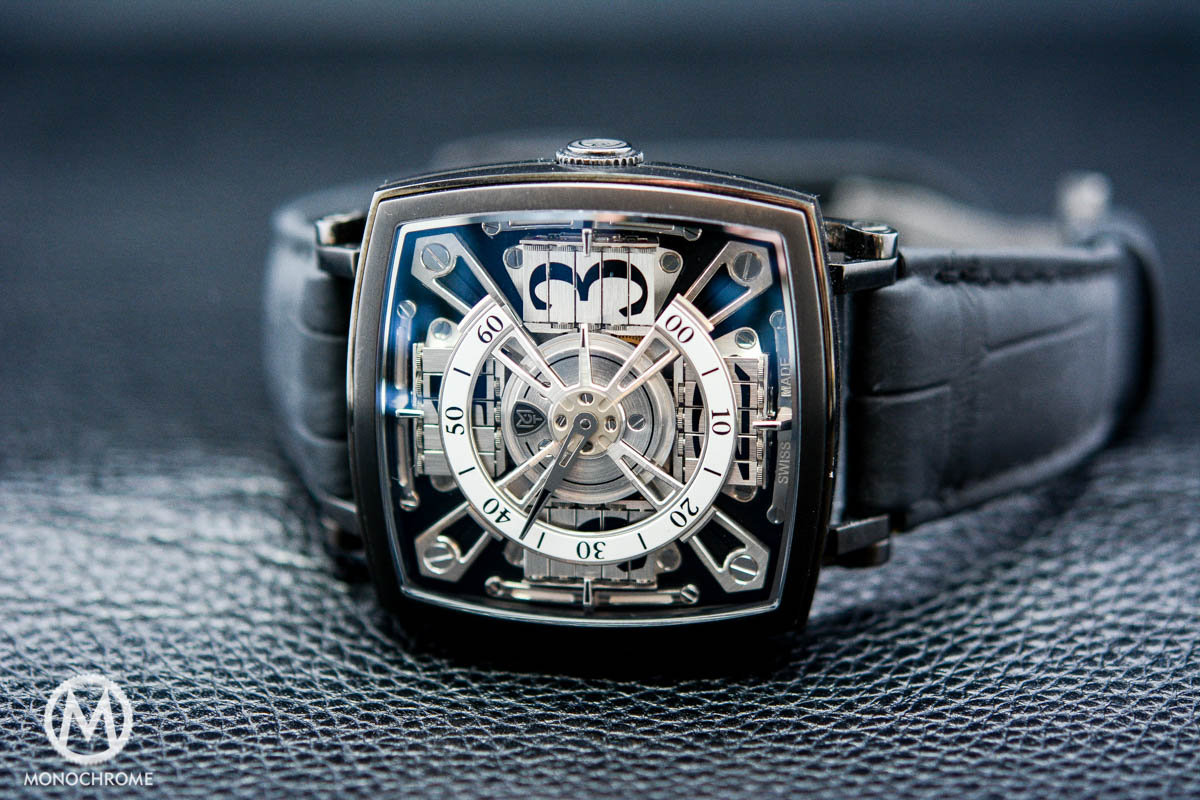
I know, that’s quite a title to start with, and of course I will explain why I make such a bold statement. I’m curious to find out if you agree – that is, after reading my review. Manufacture Contemporaine du Temps, or short MCT, introduced the Sequential One in 2009 and it is still in the collection. In the world of high-end watchmaking this is a rather odd duck, because you can also look at the Sequential One as a sort of automaton. An automaton that indicates time! It indicates the hours with 4 modules composed of 5 triangular prisms each, and the minutes are indicated by a central minute hand on a 270 degree jumping minute-sector. Today we’re reviewing the MCT Sequential One s110 EVO, after wearing it for more than a month (which was a sheer pleasure.)
Shortly before the start of the new millennium, several young watchmakers started highly innovative watch brands. In this new wave of high-end independent watchmakers (think: Vianney Halter, URWERK, MB&F, and Hautlence, among others), MCT was also one of the few brands who dared to mix a different way to indicate time with classic high-end watchmaking. To make this happen, they added completely new mechanisms to the mix. The finishing however was/is classic, meaning classic decorations of the movements, using hand-applied Côte de Genève striping, pèrlage (snailing), beveled and polished bridges, polished screw-heads and much more. This alone already puts the Sequential One in the higher regions of everything on the watch market today.
Of course we can debate whether the finishing is on par with Philip Dufour’s finishing (almost no other watchmaker’s finishing is, so that’ll be a short discussion) and whether this is a “real” complication. According to the official definition, a complication is “any feature in a timepiece beyond the simple display of hours and minutes” (source: Wikipedia), and that means that the Sequential One features NO complications¹. However this is one complicated (and very impressive) timepiece! So we’ve got something to explain to you, however first you might want to have a look at this video. It shows the prisms with the hour numerals, the rotating minute sector, and how it all works.
Recap: there are four sets of five prisms, located at the classic 12, 3, 6 and 9 hour positions, to indicate the 12 different hour numerals. And there’s one minute-sector of a three-quarter circle – 270 degrees – that makes a 90 degree rotation/jump at the end of each hour, to reveal the next hour through that one-quarter opening. Everything is driven by the in-house movement MCT-S1.0 that boasts 40 hours of power reserve when fully wound.
Calibre MCT-S1.0 is a hand-wound movement that is developed by MCT and measures 37.40 x 37.40mm (16½ lignes), and 10.75mm (including the module with rotating prisms.) It comprises 471 individual components and as mentioned before, the finishing is top notch: all bridges are hand-chamfered and adorned with Côtes de Genève. The balance spring (often called hairspring) features a traditional Breguet terminal curve, and vibrates with a frequency of 18,000 vph (2.5Hz.) The movement relies on 83 rubies that ensure that everything moves with minimal friction.
The base movement measures 4.35mm in height, and is designed rather nice. The main spring bridge looks a bit like the Star Trek logo, and features beautifully hand finished angles and internal angles that also have been beveled and polished. Also the balance wheel bridge features both internal and external beveled and polished edges and the entire bridge layout looks quite striking and different from any other watch I’ve seen.
This movement needs enough energy to rotate one set of five prisms every hour and for this MCT developed a patented system, which is also connected to the rotation of the 270 degree minutes sector-dial. And that’s absolutely necessary, since fluctuations in energy, especially strong fluctuations, have a negative influence on the chronometric precision of a watch. The in-house developed and patented system prevents these strong fluctuations and ensures good and stable chronometric rates.
MCT Sequential One s110 EVO on the wrist
It must be said that the Sequential One, and thus also the s110 EVO iteration, isn’t small by any means. However it wears very comfy! I remember when I bought my first square watch, the TAG Heuer Monaco, many people commented its rather big size. It measures 39 x 39mm, go figure. However that was back in 2004 when the big-bigger-biggest hype had not hit the watch industry, yet! Today everyone is used to large, vastly oversized, watches and, based on the specs the Sequential One is a large watch, even for today’s standards. However on the wrist it doesn’t behave as an uncomfortable oversized watch and it actually wears very pleasant. The 45 x 45mm have not felt too large, and I think that the very short, downward sloping lugs and light weight (the case is in titanium) help to improve its comfort.
The fact that the case is only 7.10mm tick on the edges, somehow gives the visual impression that it isn’t a thick case. And although the thickness right in the middle is 15.5mm, is doesn’t feel thick either. Much different than for instance a Panerai Radiomir that has pretty much the same dimensions! One of the factor that also help to improve the wearing comfort, is the curved case back that is mildly hollow and follows the shape of the wrist.
You will have to get used to the way the time is indicated. I guess that like me, you will get used easily to the large hour numerals that are visible on a different position every hour. The minute hand makes steady full rotations, however it only makes a three-quarter rotation every sixty minutes! Therefore the sixty minutes of an hour are indicated on the 270 degree minute scale and I found it much more difficult to get used to this.
My/your eyes and mind have the expectation that the minute hand makes a full rotation every sixty minutes. When the minute hand points to the 10 o’clock position for instance, you would intuitively expect that it is 3:50, yet it actually is 3:40 as you can see in the photo below.
Or when the hand points towards the 3 o’clock position, you would expect it to be a quarter past five, however it actually is 5:30h as you can see in the photo below.
Now the main question is, if this was disturbing and the simple answer is no. Certainly, I sometimes had to look twice to know the exact time. However since that meant looking at the Sequential One for a second time, that was never a punishment. And when you, unlike me, think that’s disturbing, than know that the Sequential Two has a minute hand that makes one full rotation every sixty minutes and thus reads more intuitively.
“One of the most impressive timepieces…”
Since I started with a rather bold statement, I guess it would be good to address that. Since most timepieces have “a few” gears that rotate in one level, and make two or three hands rotate. The Sequential One (and its siblings) are more like an automaton that indicates time. The sheer complexity of the movement exceeds the vast majority of mechanical timepieces, even many of the complicated ones, likes a tourbillon or an annual calendar. And that with the only purpose to indicate hours and minutes. I do not perse cheer for complexity for complexity’s sake. However the mechanics in the MCT timepieces is so interesting, both from a historical point of view as from pure complexity, that it really adds a lot to the ‘package’.
Like URWERK (check the stunning UR-210s), Hautlence (with the HL2 or the Vortex for instance) and MB&F (have you seen the Frog, the MegaWind or HMX?) they have found their own way to indicate time, and in doing that they blended old-fashioned automaton mechanics and all modern means that are necessary to make everything work perfectly. This sort of timepieces have created their own category that we here at Monochrome have dedicated an entire section to…
Specifications and price
Price-wise the new Sequential One s110 EVO starts at 69,500 CHF for the titanium version (we covered it here) and 74,500 CHF for the DLC black version. By all means, a very good price for such a magnificent and complex machine. We’ve described the movement’s complexity, however please note that the case is also rather complex. There’s a top case, a case back and in between there’s a full sapphire mid-case! Attached to the top and the back are the lugs that come together, and ‘squeezed in between the top and back is the sapphire mid-case.
- Function: Sequential indication of the hours on prisms and the minutes are indicated by a central hand on a jumping/rotating 270° minute-sector.
- Movement: MCT-S1.0 mechanical hand-woud movement, 471 components, 40 hours power reserve, 83 Rubies, frequency 18,000 A/h (2.5Hz)
- Finishing: Hand-chamfered bridges with Côtes de Genève striping, balance spring with Breguet terminal curve, patented system for rotation of the minutes dial and for accumulation of energy.
- Case: 45.00 x 45.00mm, height is 15.5mm in centre and 7.10mm on the edges, grade 5 titanium with DLC coating, 41 parts.
- Glass: Front crystal made of sapphire with double anti-re?ective coating, rear crystal made of sapphire with anti-re?ective coating on the inside side, middle crystal made of sapphire.
More info over at the MCT Watches website: www.mctwatches.com
¹ We have dedicated an entire section to watches with another way to display time (see: Other Display), and this is nested under “By Complication”. That’s done on purpose, because I think there should be a new category of complications; a category of different ways to indicate time.

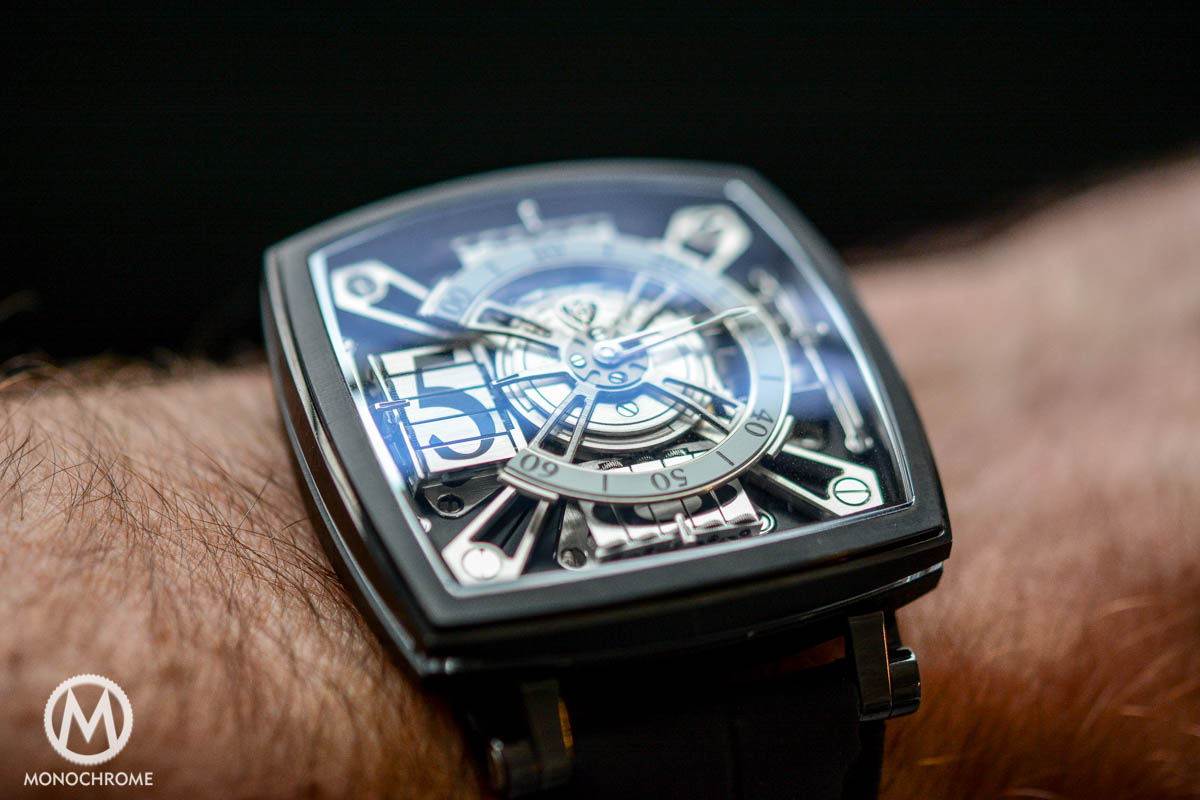
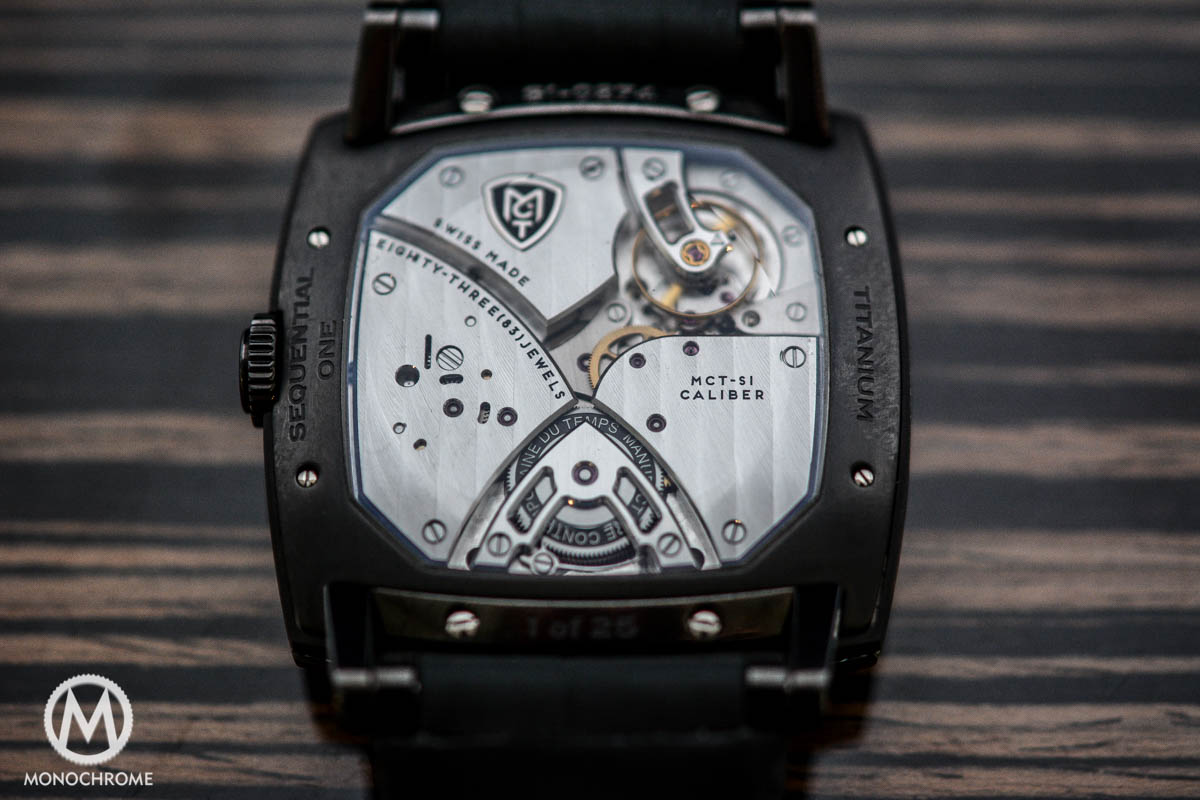
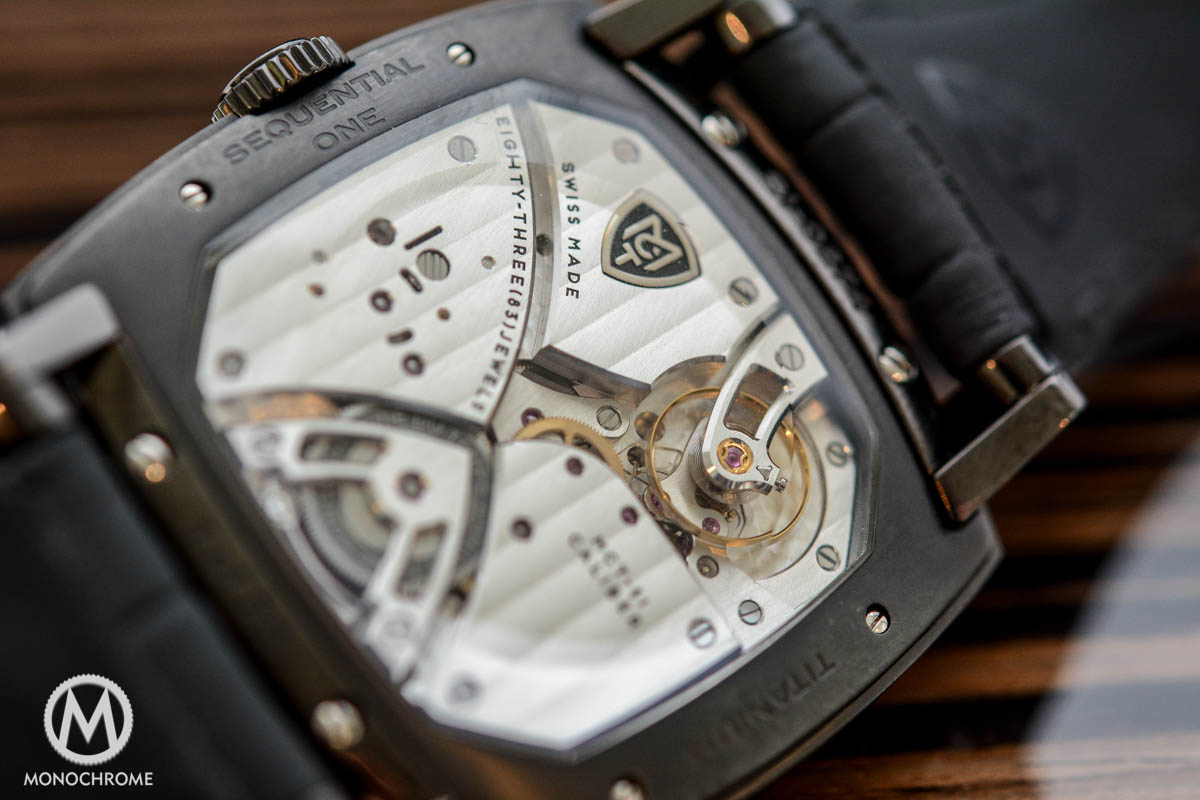
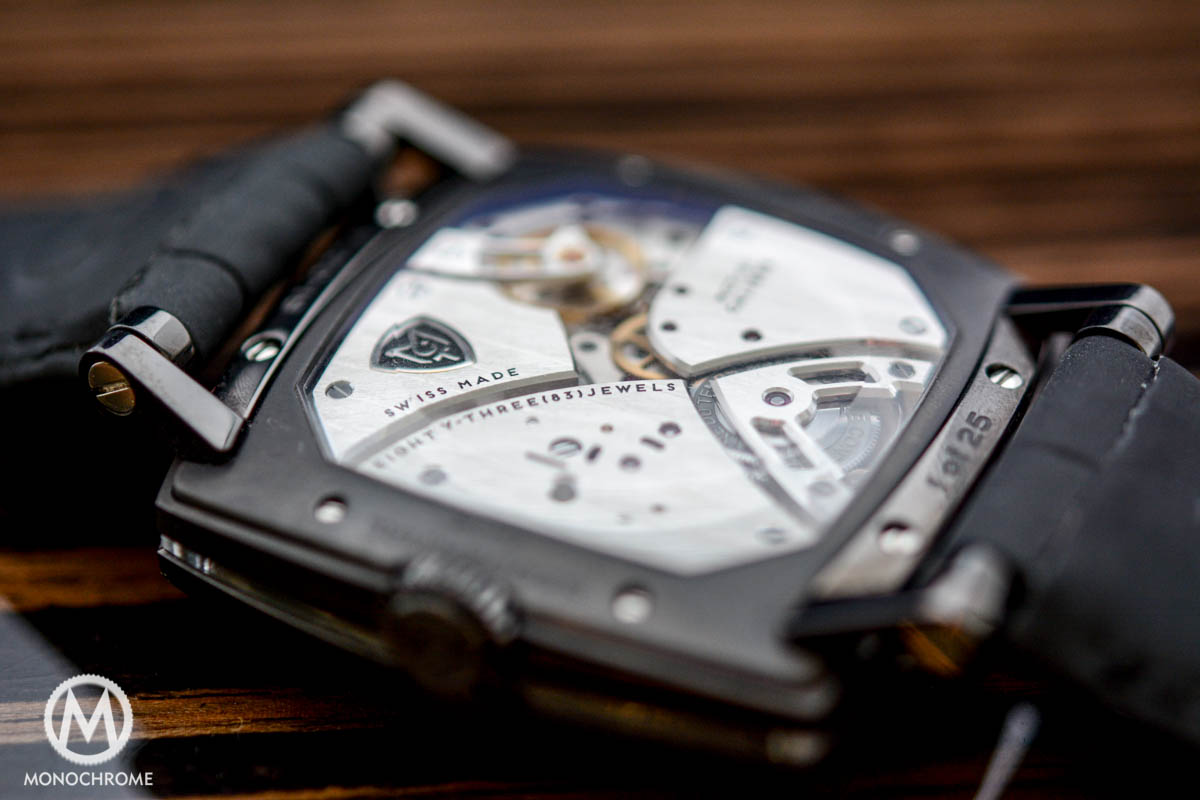
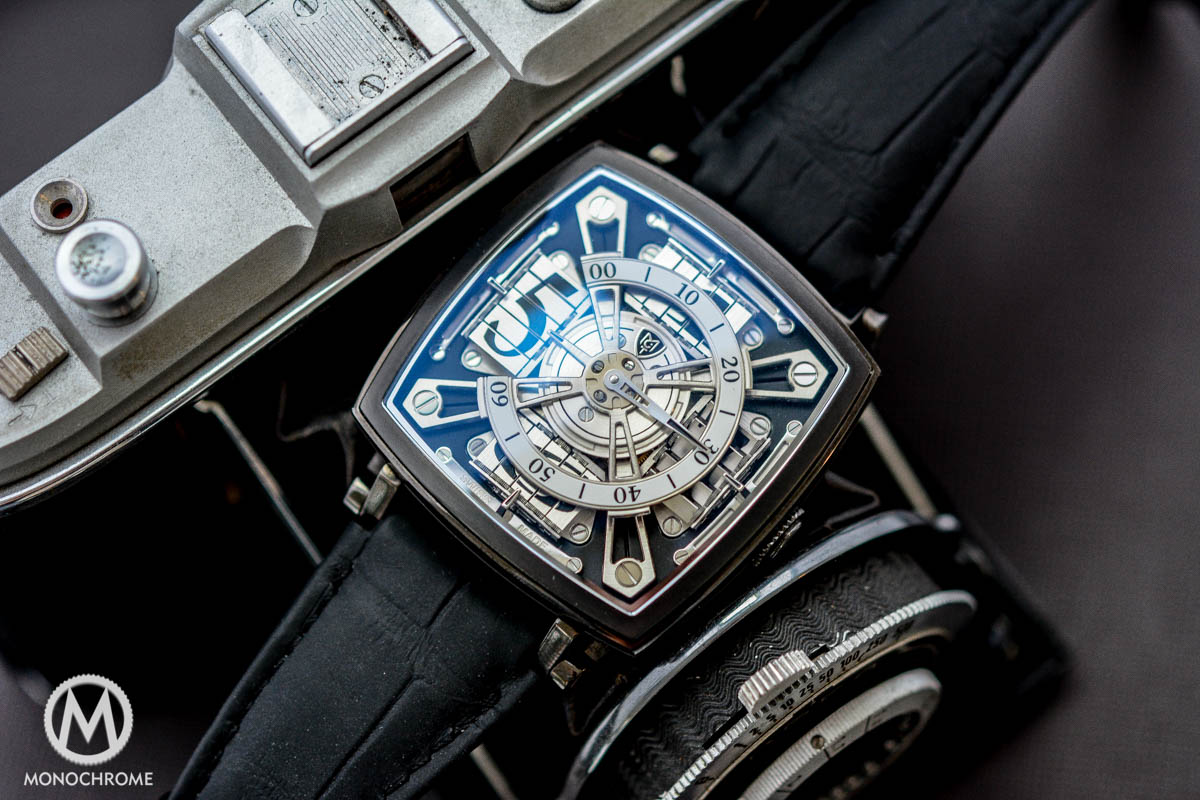
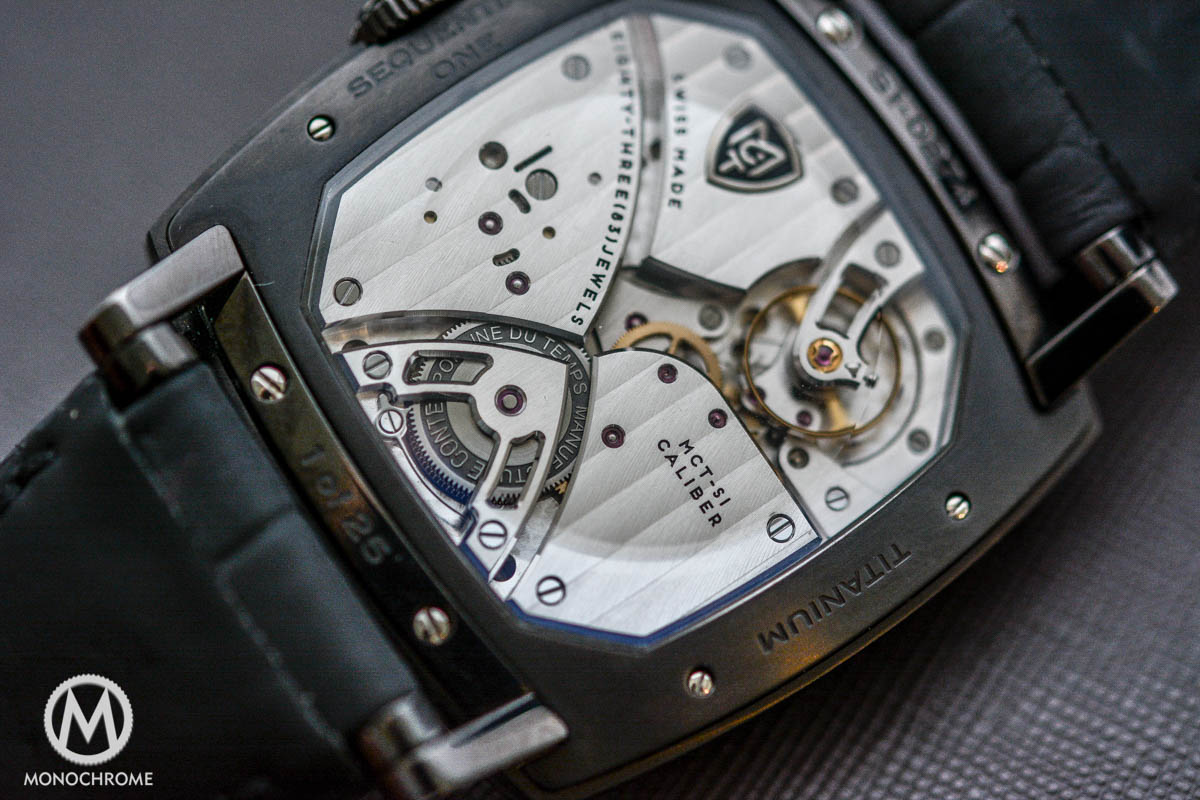
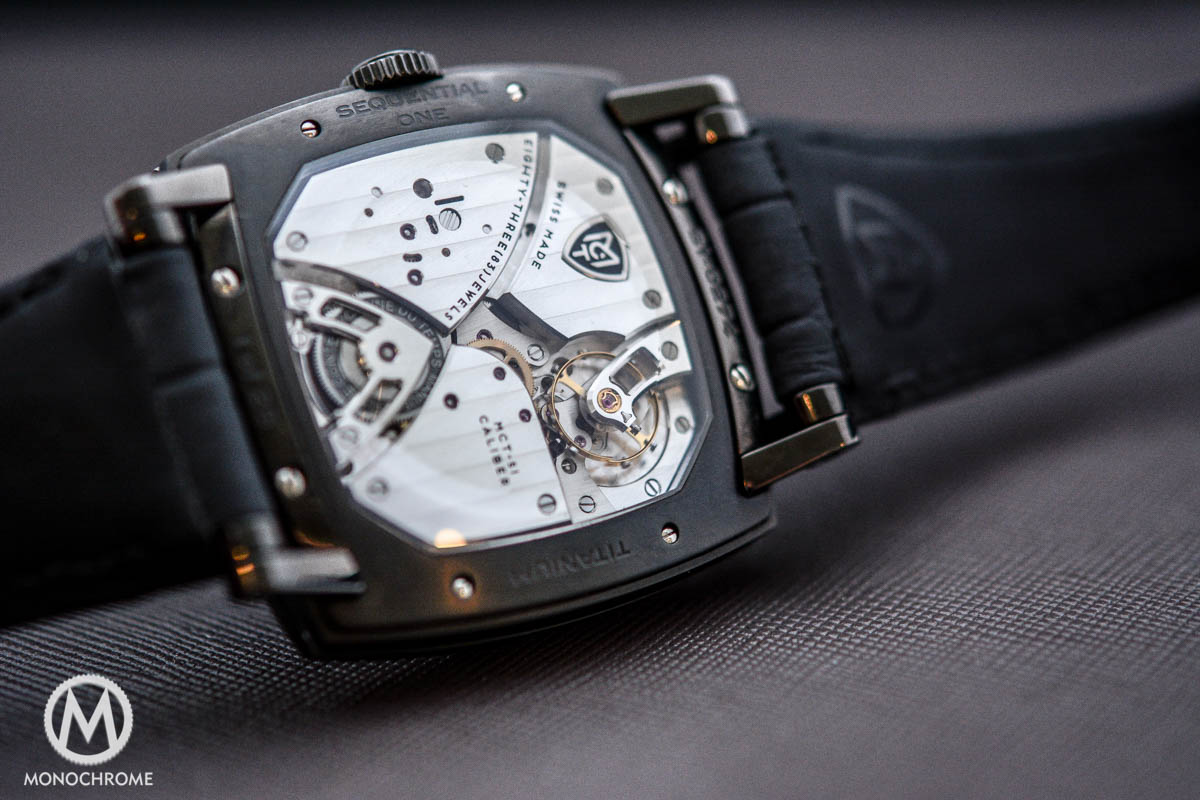
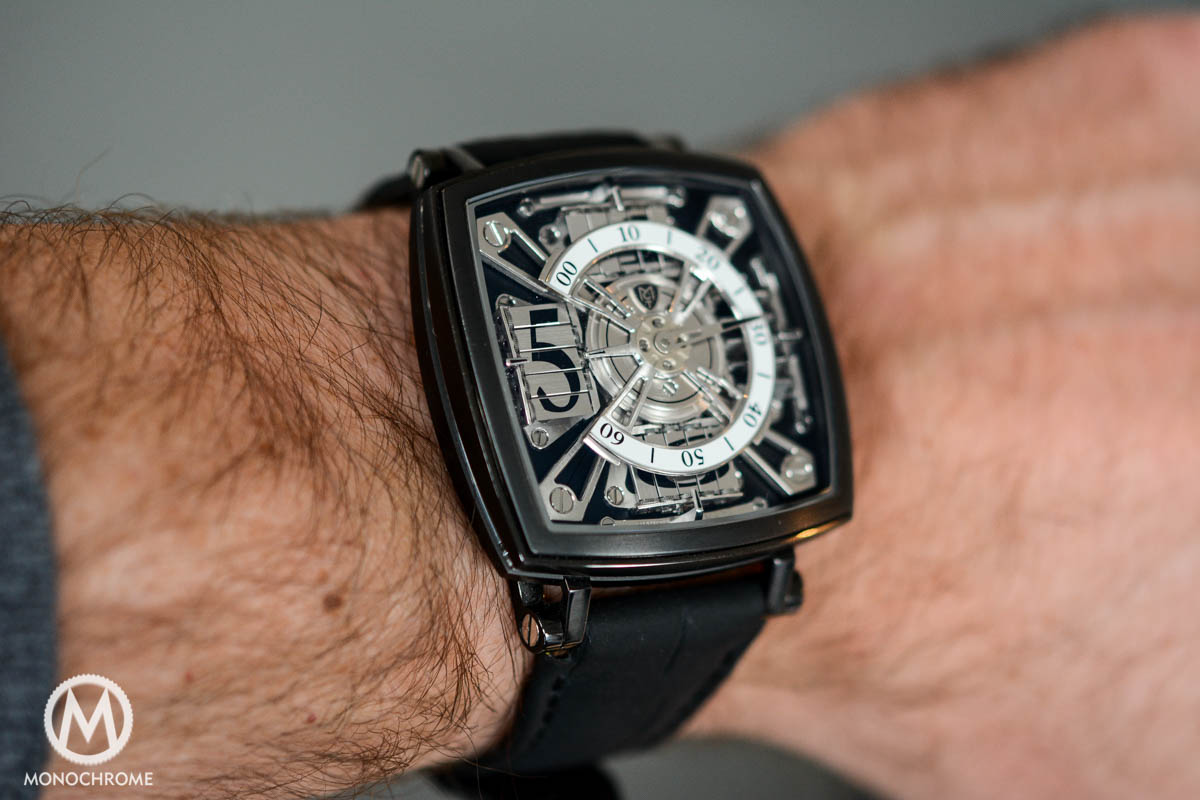
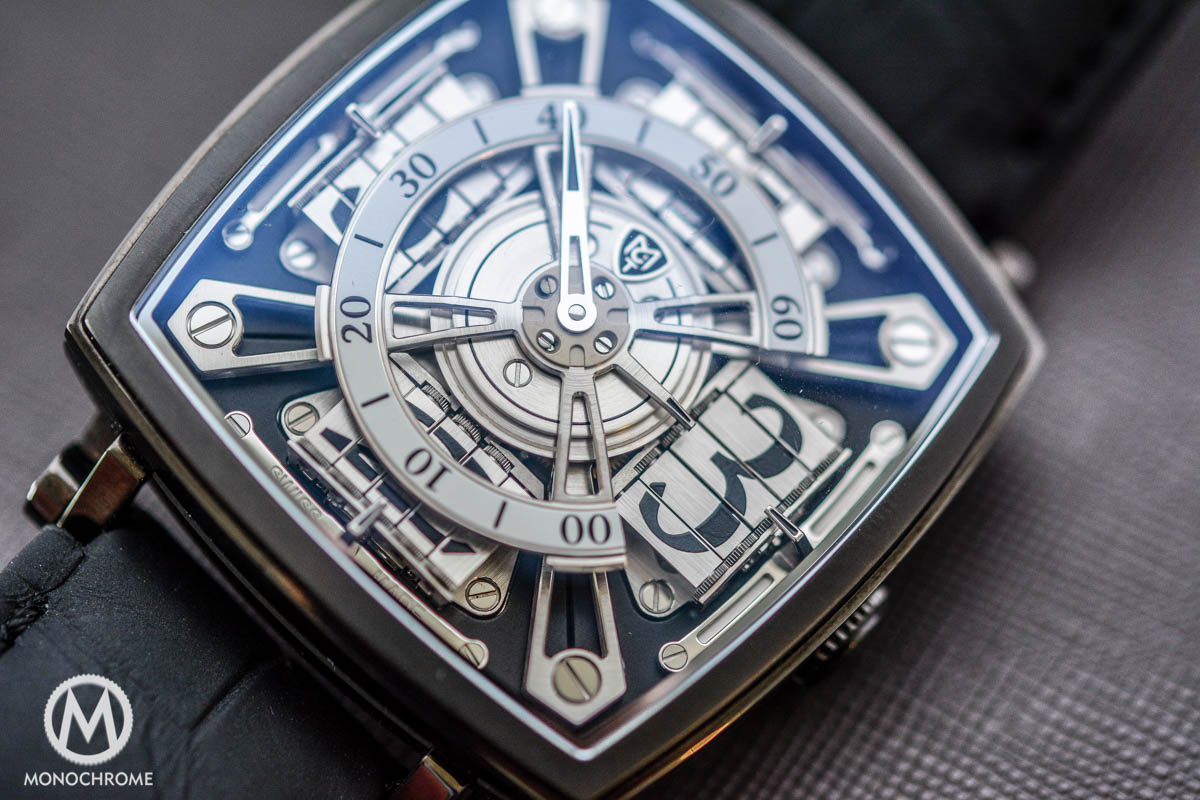

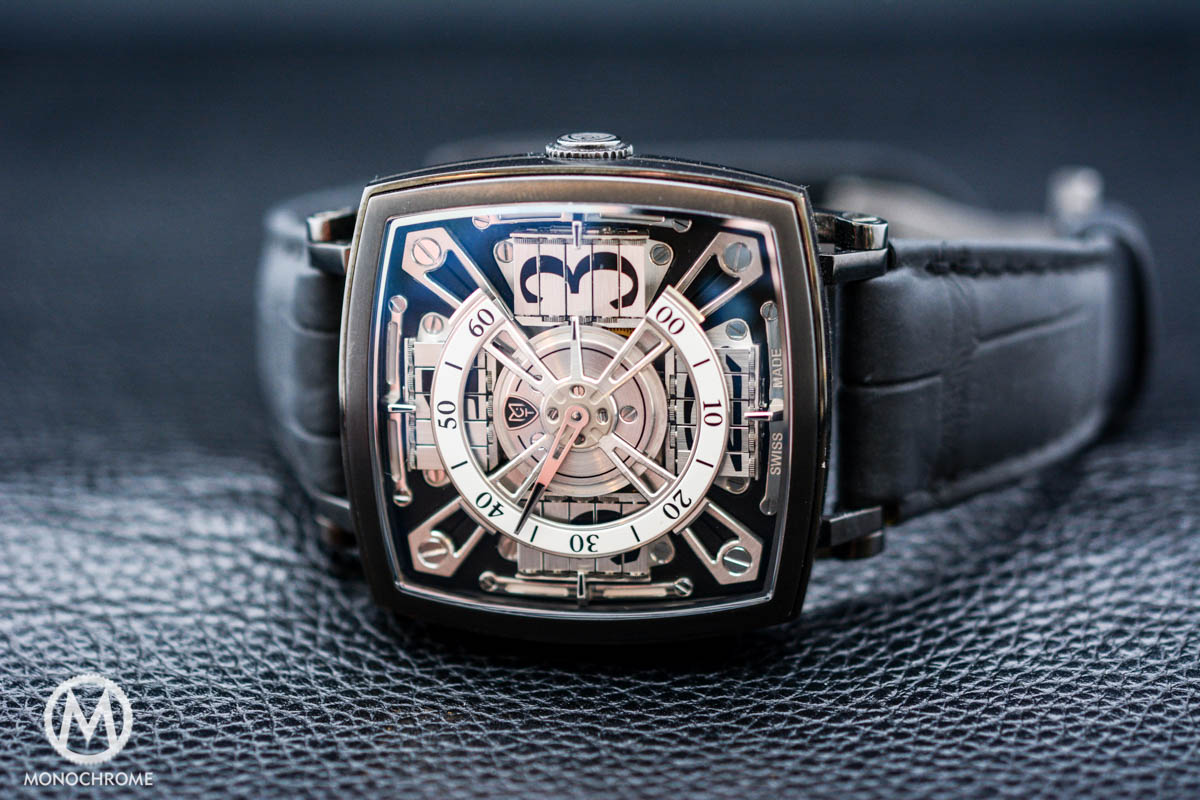
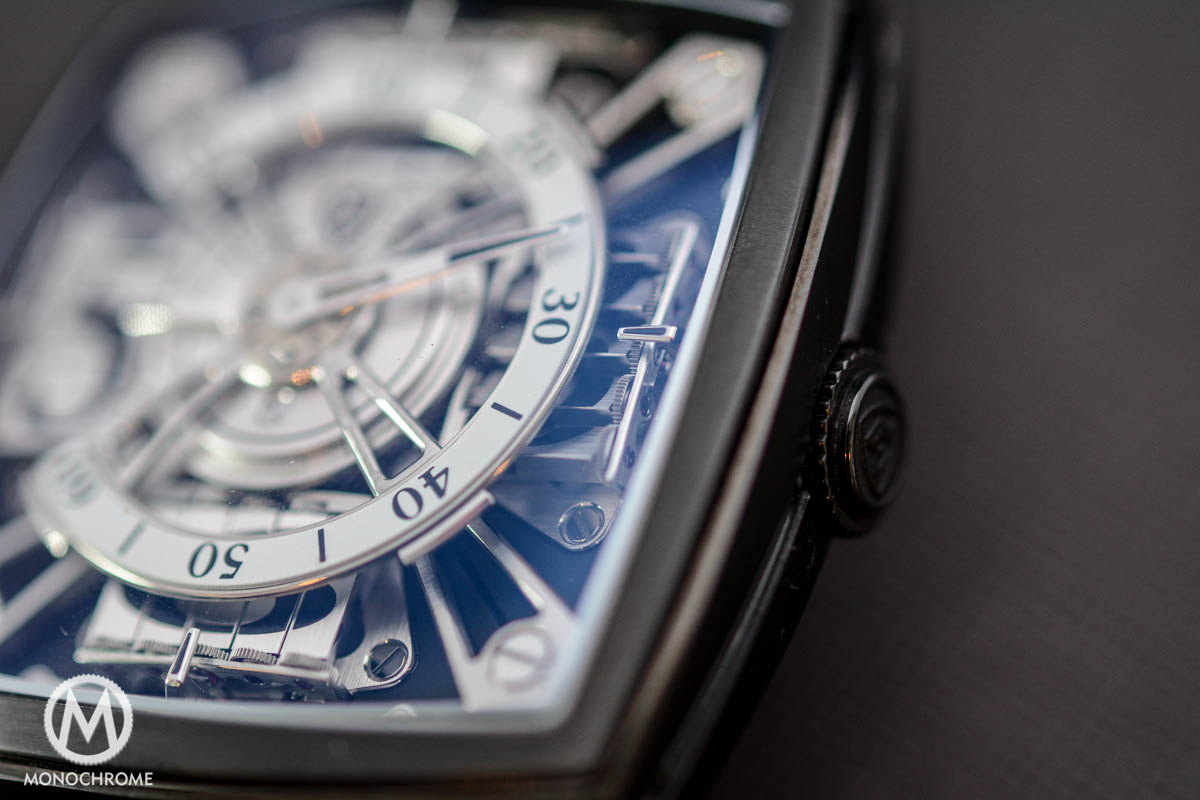
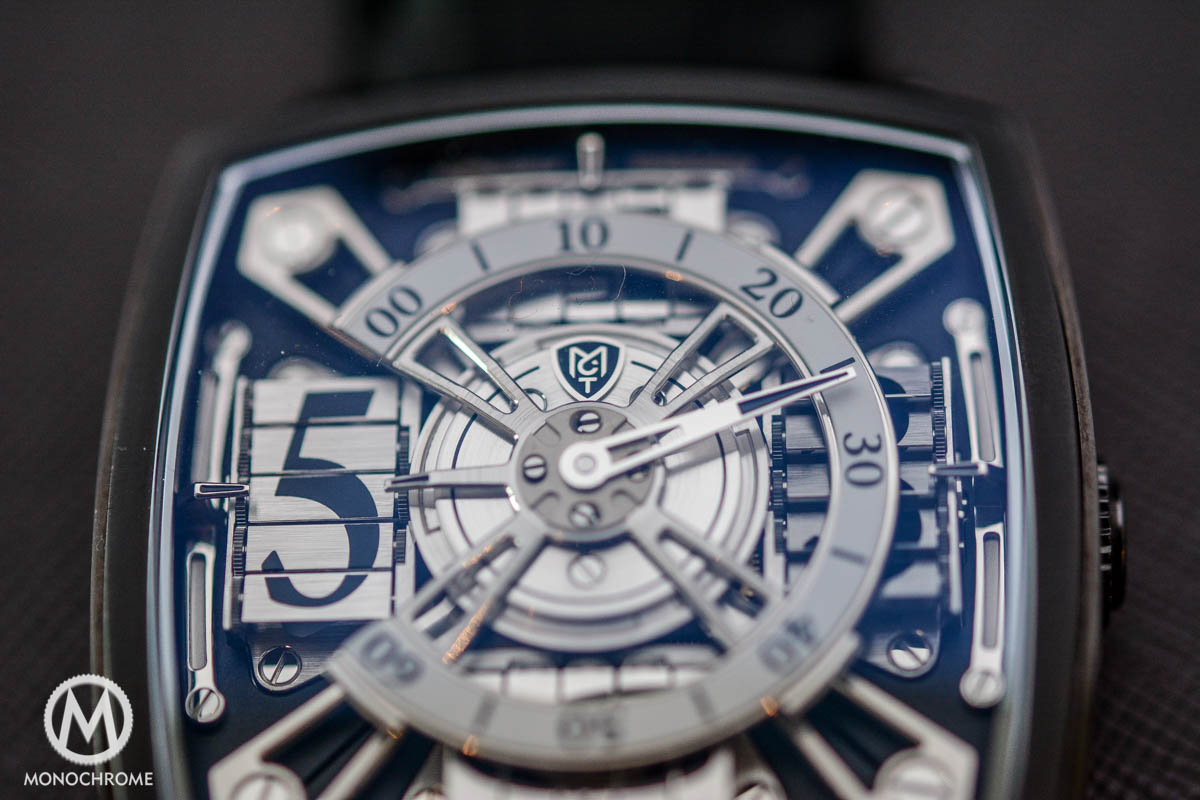
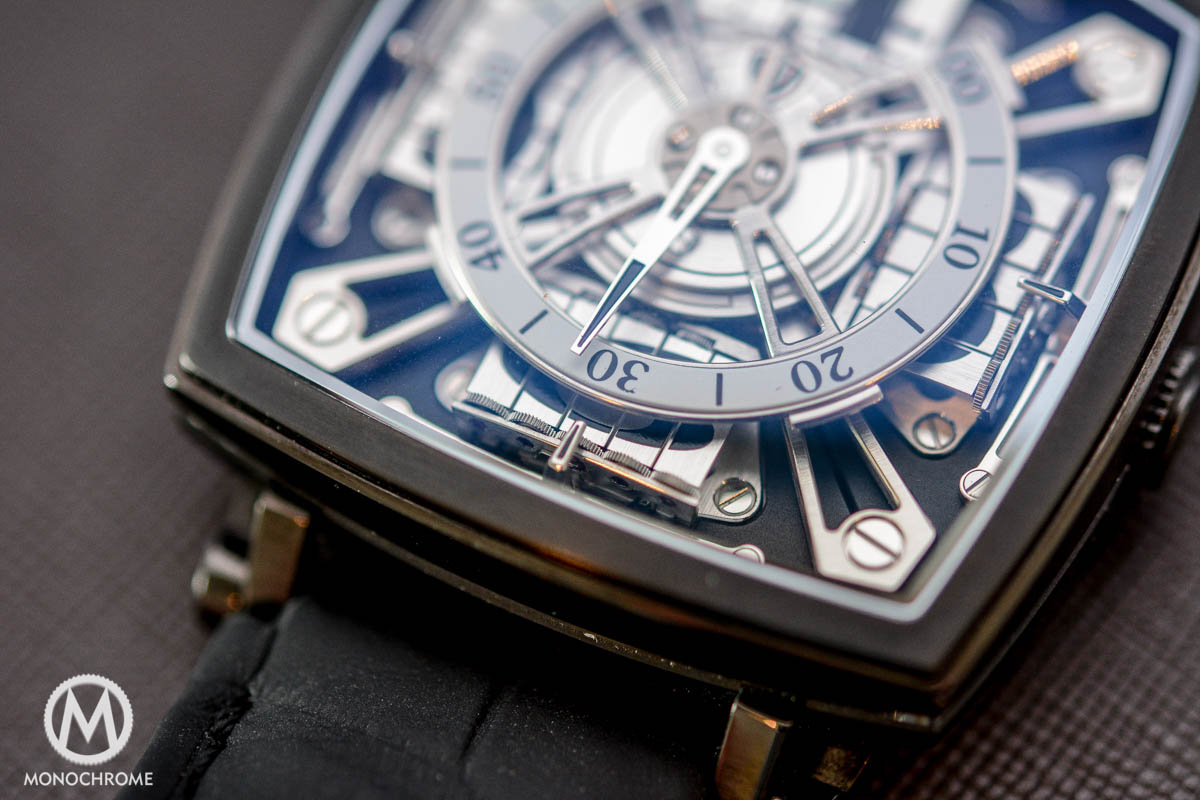
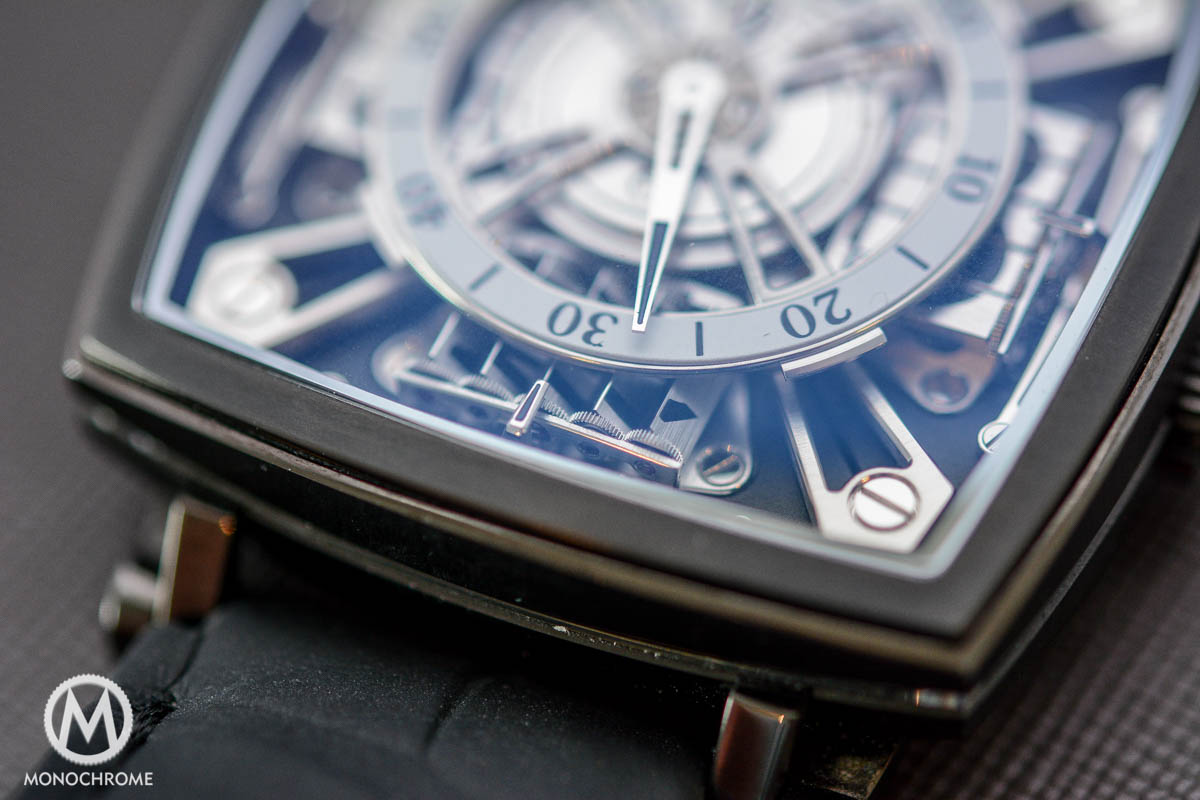
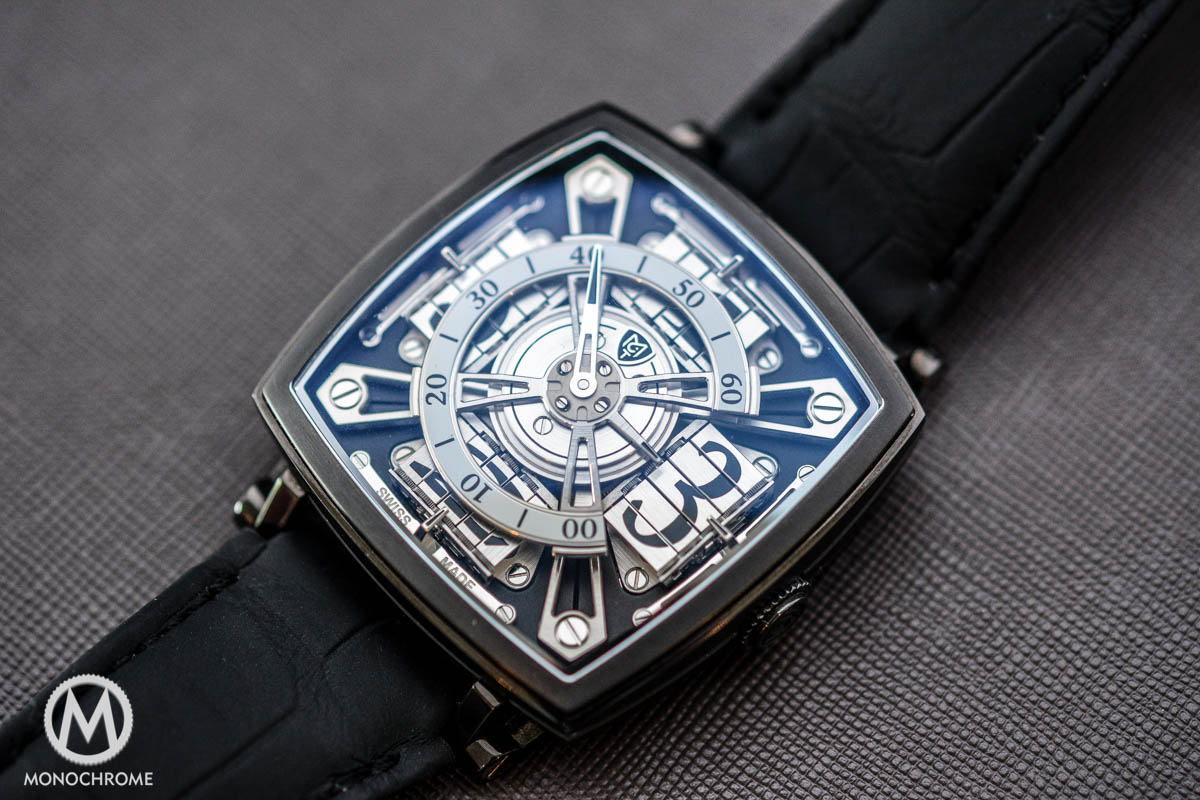
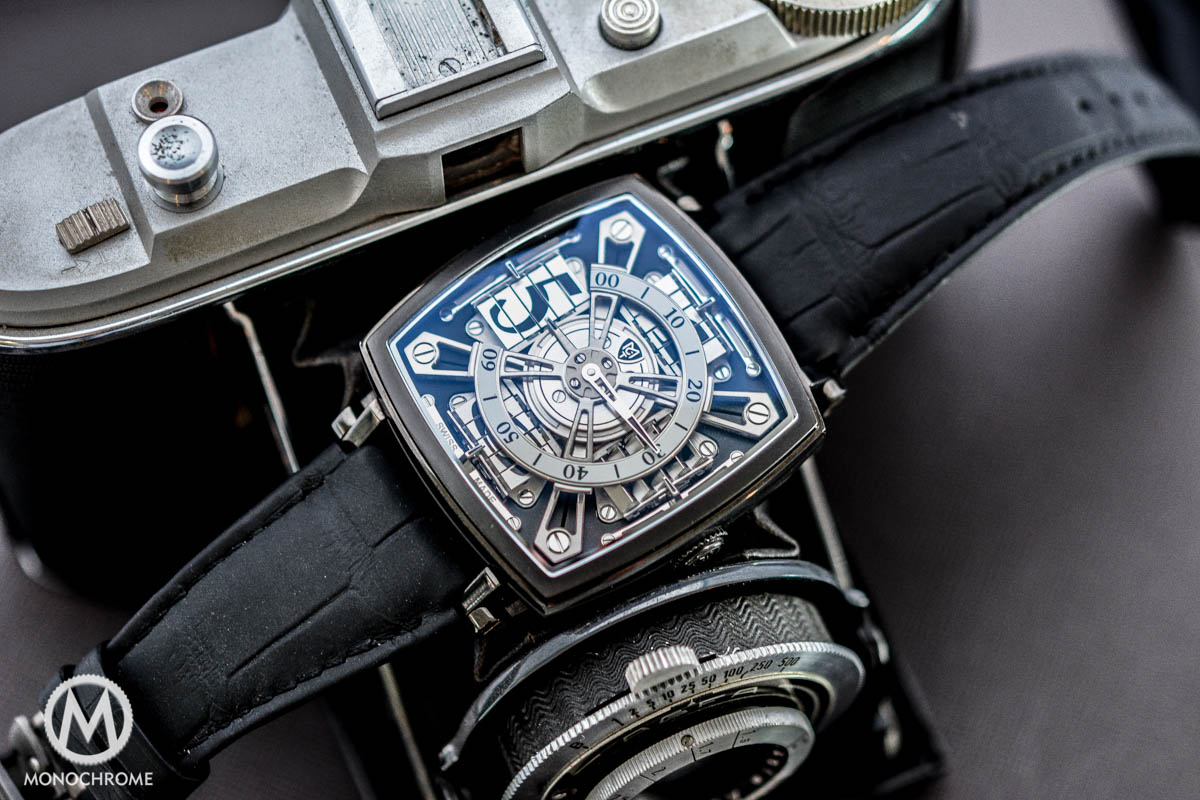
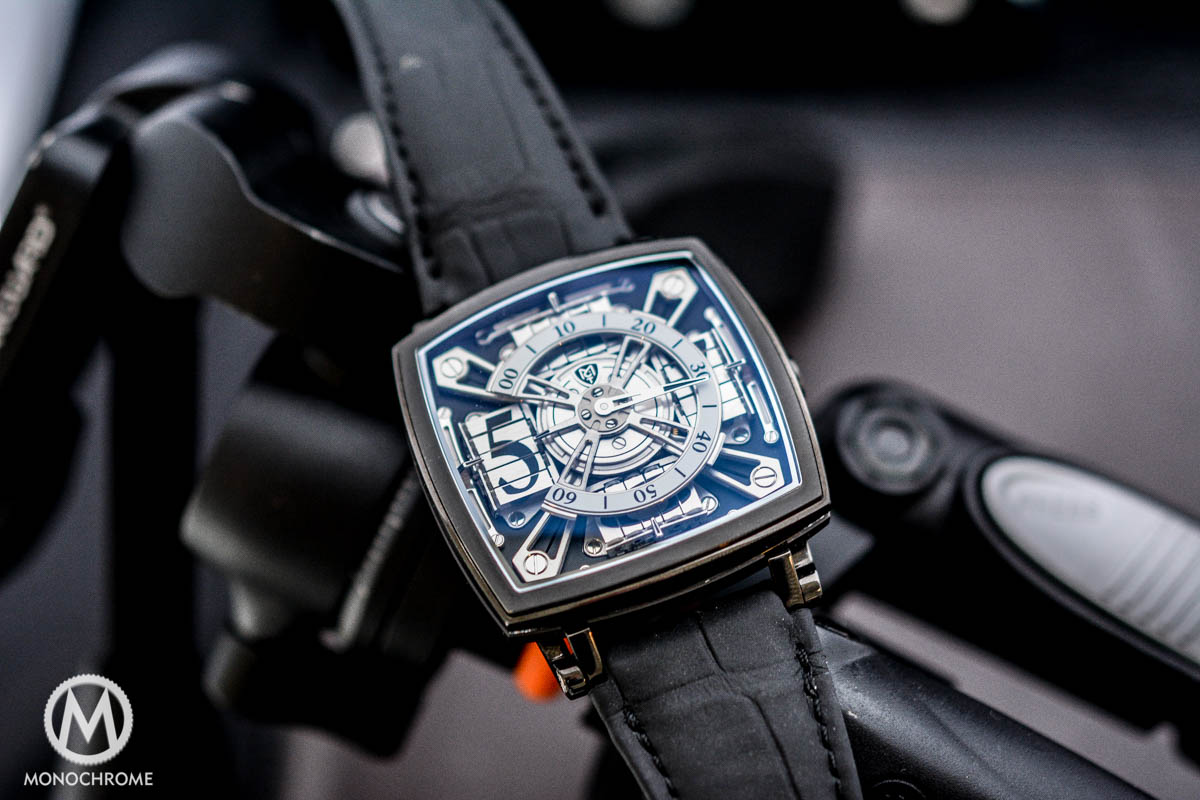

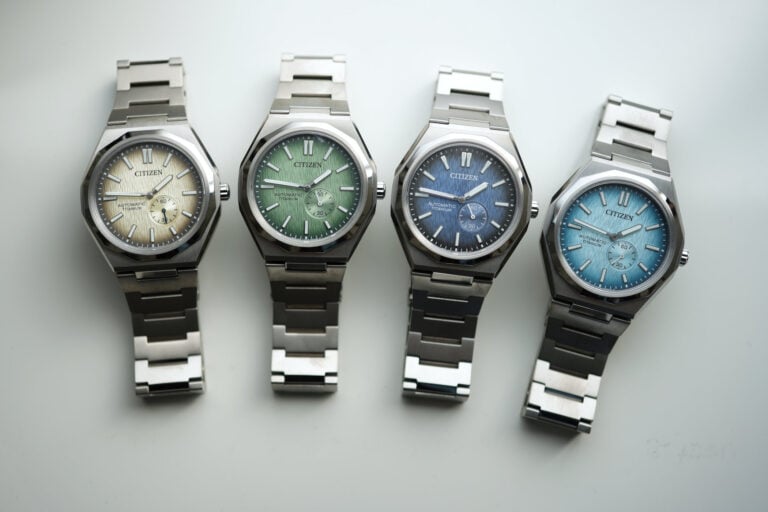

1 response
Not a single picture from the side…shame